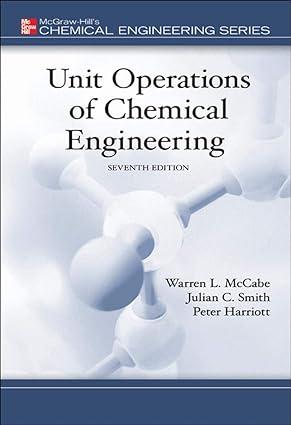An adsorber for removing vinyl chloride monomer (VCM) from air has two beds of BPL carbon that
Question:
An adsorber for removing vinyl chloride monomer (VCM) from air has two beds of BPL carbon that are 4 ft deep, and at breakthrough, the beds have 0.09 lb VCM carbon. The average bed temperature is 80°F. The beds are regenerated with air at 200°F and 120 ft/min, and the exhaust gas is incinerated. Regeneration at higher temperature is being considered.
(a) How fast does the temperature front move through the bed if the bed operates adiabatically and the heat of desorption is 1.5 times the heat of vaporization?
(b) If the inlet temperature is increased to 300°F with the same mass velocity, what is the rate of movement of the temperature front?
(c) If the bed temperature could be increased very rapidly to 200°F by using electric heaters in the bed, what would be the equilibrium concentration of VCM in the vapor phase? If airflow were then started at 120 ft/min and 200°F how rapidly would the desorption front advance through the bed?
(d) What is the main advantage of increasing the regeneration temperature?
Step by Step Answer:

Unit Operations Of Chemical Engineering
ISBN: 9780072848236
7th Edition
Authors: Warren McCabe, Julian Smith, Peter Harriott





